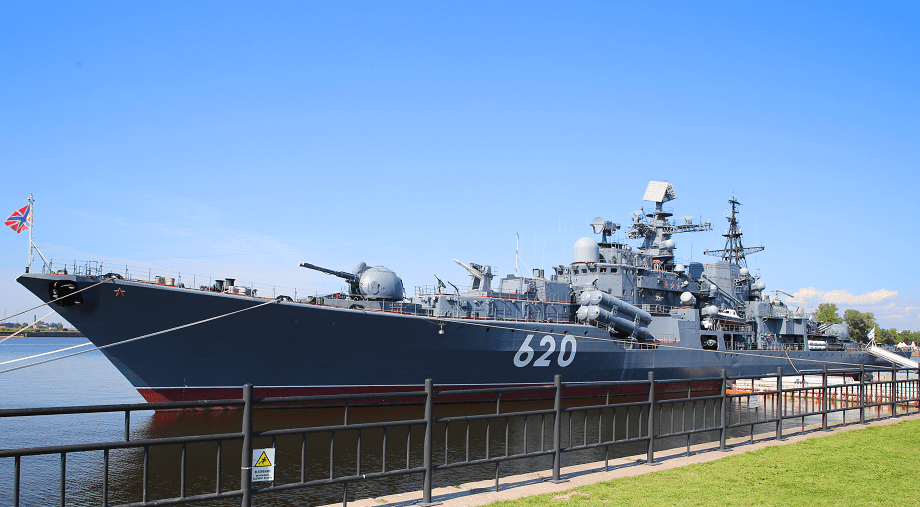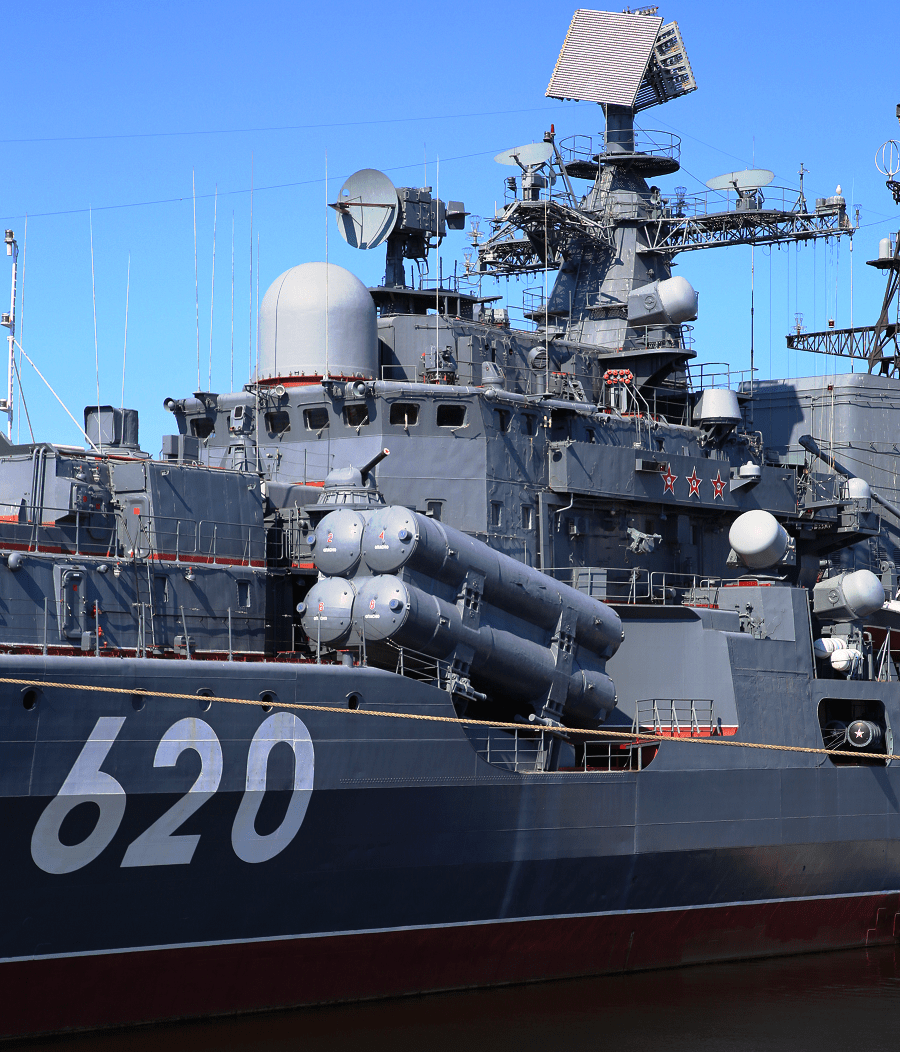Проект 956 «Сарыч» Беспокойный (Restless). NATO code: Sovremenny class destroyer
The Sovremenny class, Soviet designation Project 956 Sarych (buzzard), is a class of anti-ship and anti-aircraft guided-missile destroyers of the Soviet and later Russian Navy. The ships are named after qualities, with “Sovremenny” translating as “modern” or “contemporary”. Most of the ships have been retired from active service and one converted into a museum ship in 2018; as of 2021 three remain in commission with the Russian Navy with several in overhaul. Four modified ships were delivered to the People’s Liberation Army Navy, and remain in service.
The Sovremenny class are guided-missile destroyers, primarily tasked with anti-ship warfare, while also providing sea and air defense for warships and transports under escort. The class was designed to complement the Udaloy-class destroyers, which were fitted primarily for anti-submarine operations.
These ships have a maximum displacement of 7,940 tons. The ships are 156 metres (511 ft 10 in) in length, with a beam of 17.3 metres (56 ft 9 in) and a draught of 6.5 metres (21 ft 4 in). They are armed with an anti-submarine helicopter, 48 air defence missiles, eight anti-ship missiles, torpedoes, mines, long-range guns and a sophisticated electronic warfare system.
Initially, it was assumed that the destroyer “Restless” would become part of the 193rd brigade of anti-submarine ships of the Pacific Fleet, but by directive of the Commander-in-Chief of the Navy №729/11-0086 of January 29, 1992, the ship was transferred to the Black Sea Fleet.
On August 13, a fire broke out in the sauna on the ship, as a result one person died, the HF units of the Fregat radar, some office and residential premises burned out. The next day, a sailor committed suicide on the ship. After the repair on August 24, 1992, the ship was transferred to the Baltic Fleet, to the 128th brigade of surface ships of the 12th division of surface ships.
In 1994, the destroyer “Restless” as part of the KUG won the Prize of the Commander-in-Chief of the Navy. From October 10 to October 20, the destroyer provided a visit to St. Petersburg for the Queen of England, for which the shop was awarded a diploma of the President of Russia. On May 23, 1995, an incident occurred on the destroyer with an explosion of a cartridge in the barrel of an AK-630.
Assembly plant: Severnaya Verf №190 (St. Petersburg, Russia)
Period of building: 1987-1990
Crew: 296 (during war period: 358)
Length: 156 m
Beam: 17 m
Engine: 2 × ГТЗА-674
Power: 100,000 HP
Max speed: 34 knots
Range: 7200 km
Armament: 2 × AK-130 (naval), 4 × AK-630 (anti-aircraft), 2 × P-270 moskit (anti-ship rocket), 2 × RBU-1000 (anti-submarine mortar), 2 × SET-65 (torpedo)
Aviation group: Ka-27PL
The Patriot Military Historical Park in Kronstadt (Russia)
Severnaya Verf is a major shipyard on Gutuevsky Island in Saint Petersburg, Russia, producing naval and civilian ships. It was founded as a branch of the Putilov Plant in the late 1800s. Under the Soviets, the shipyard was generally known as Shipyard No. 190 (in the name of Zhdanov) and reverted to its former name in 1989.
The priority market for Severnaya Verf is military export to Asian countries as India, China and Vietnam.
The shipyard was established by 1912 with the name of Putilov Shipyard (Russian: Putilovskaya Verf). It was situated near the main Putilov factory, and began building small warships, up to destroyers in size, in addition to non-military ships for the government like dredgers, tugboats, etc.
Under Bolshevik control it was known as the Severnaya Verf and was then renamed Severnaya sudostroitel’naya verf in the early Twenties. It was given the honorific “in the name of Zhdanov” in 1935 and was renamed as Shipyard No. 190 (in the name of Zhdanov) when the Soviets numbered most of their industrial facilities on 30 December 1936.
During this time, the yard built its only submarines; notably several Shchuka and M-class boats as well as components for S-class submarines that were assembled in Vladivostok in the Far East. Badly damaged during World War II by the Germans, the shipyard was rebuilt and enlarged after the war, partially by using plundered equipment and machines from Germany, and specialized in larger surface warships up to cruiser size.
As of 1983 about one-third of its output was commercial ships. The shipyard reverted to its earlier name of Severnaya Verf on 2 August 1989. It is now part of the Severnaya Verf Production Association.














